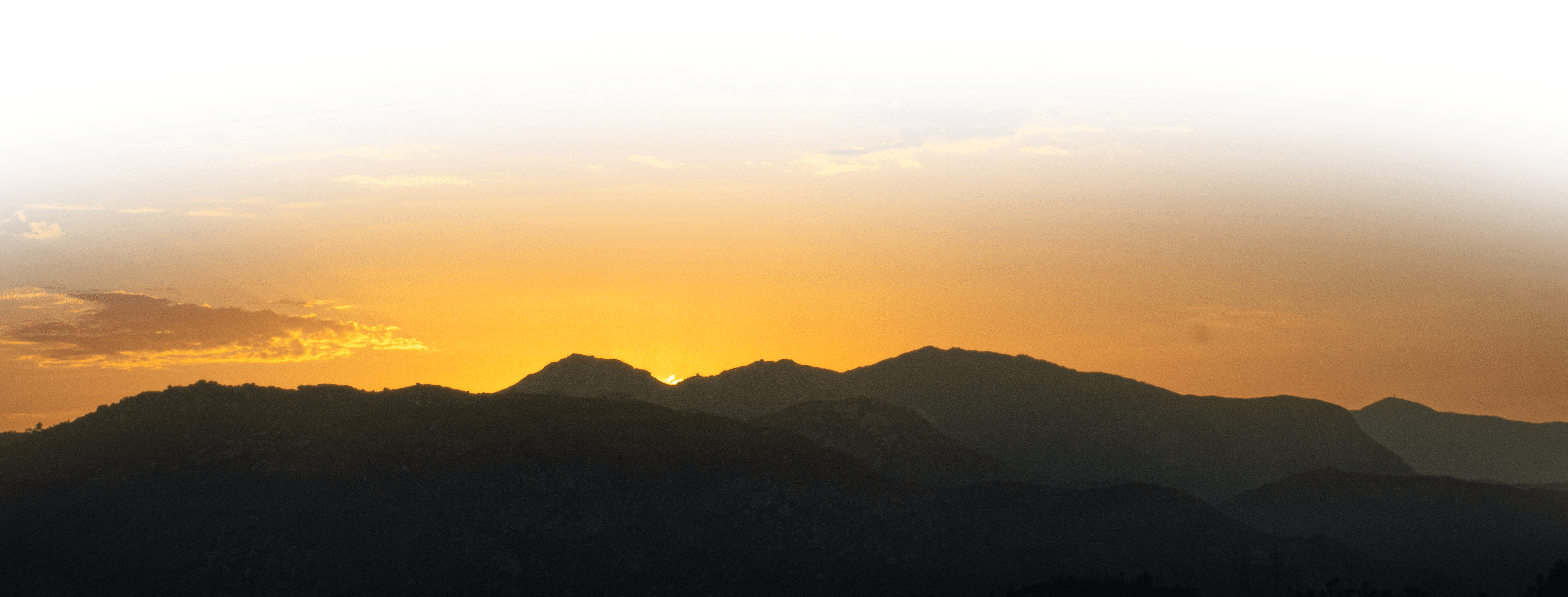Spring 2021

Wild lilacs (Ceanothus tomentosis) are in full bloom this month!
Dear Friends and Supporters,
It’s that time of year again, when so many of our flowering plants come out of dormancy, and blooms can be found everywhere! As a transplant to southern California, I am still so amazed and delighted by the incredible diversity of plants and animals that share this landscape with us. If you have not yet discovered the phone app Seek, I highly recommend it. It is a free and easy way to quickly identify almost any species you might find on the trail. This is also the perfect time to introduce yourself to Seek’s more sophisticated cousin: iNaturalist. Read on to learn how you can use iNaturalist to participate in this year’s City Nature Challenge.
After the year we have all had, it feels like people too are beginning to come out of a long hibernation of sorts. With the availability of vaccines (thank-you science!), we are finally beginning to see a way out, and hopefully a way back to each other.
If you are reading this, then you have chosen to be part of the EDI community, and we are so grateful. I cannot wait to finally meet you on the trail, and in person, one day soon!
Sarah Maisonneuve,
Executive Director
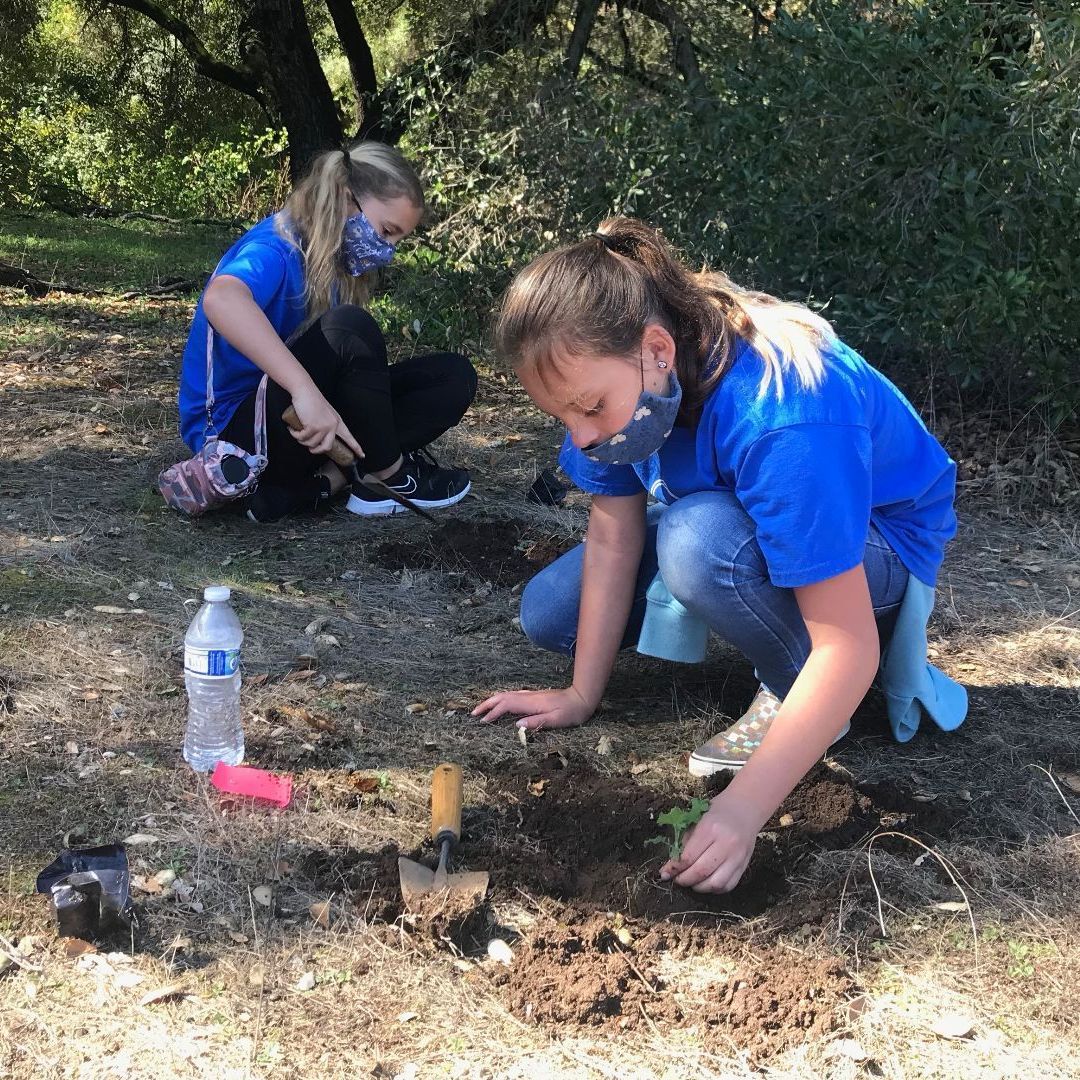
Students from Crest Elementary School planting pollinator friendly plants at Crestridge Ecological Reserve during an Elementary Field Trip.
Back to School!
In March, EDI Education Director, Vicky Bonnett, and her team of field instructors were able to meet with students in person, on the land and on their campuses!
Vicky says, “We really missed seeing the kids so we made sure to make the best of some beautiful weather days up at Crestridge Ecological Reserve. We took some extra-long hikes, planted some new pollinator plants and slowed down for a bit to decompress and check out the birds.”
On campus, the students dove right into learning about the water cycle with some hands-on activities that kept the kids moving! Students created their own contained water cycle with items from EDI’s “Nature At Home Science Kit.” The kids also put themselves in the water cycle to see how many places a water droplet might travel. They will take the remaining supplies and continue exploring the water cycle at home!
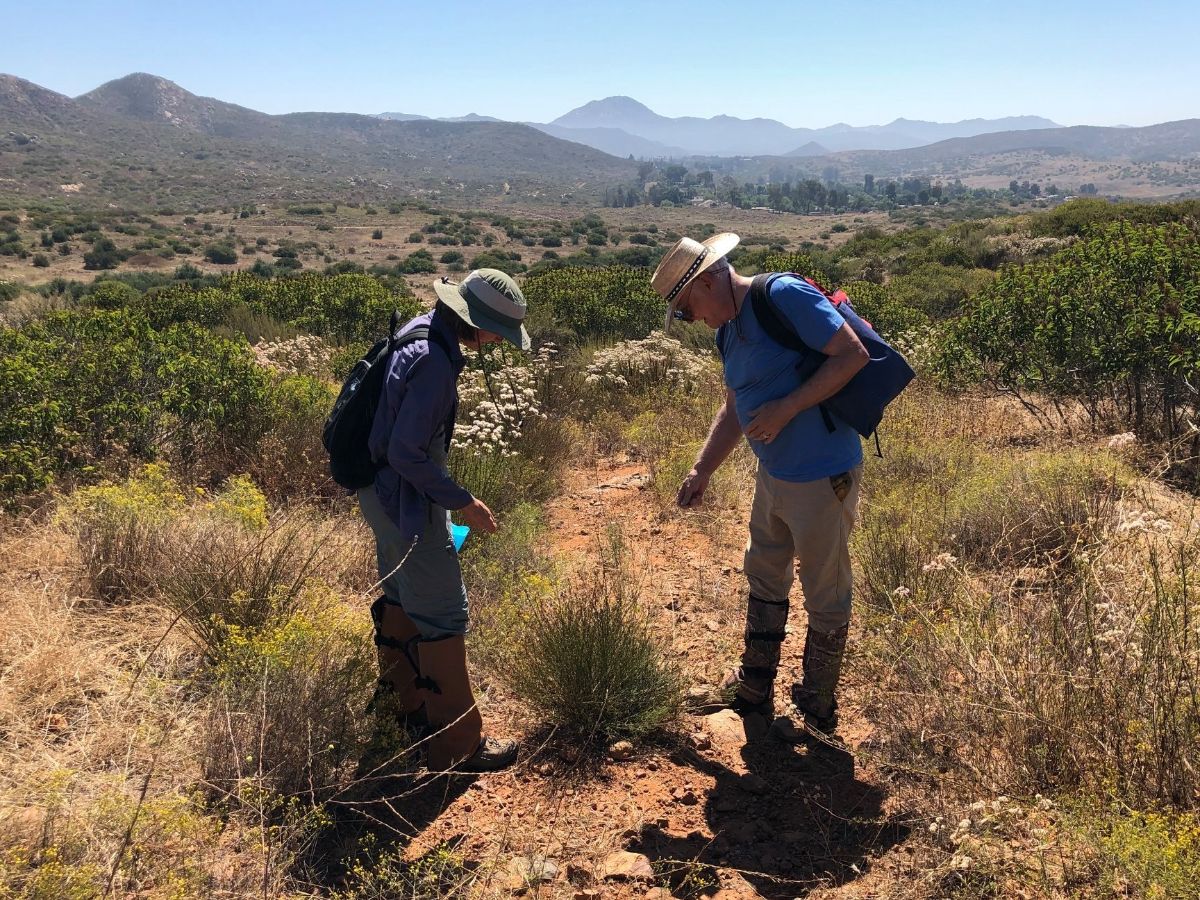
EDI volunteers identifying native plant species in San Diego County.
City Nature Challenge is on!
What started as a friendly competition between San Francisco and Los Angeles in 2016 has grown into an international event called City Nature Challenge, inspiring people from around the world to find and document plants, animals and other organisms living in their communities. City Nature Challenge is an annual four-day global bioblitz held at the end of April (April 30 - May 3, 2021), when volunteers use the iNaturalist app to collect and share images of as many different species as they can find. Traditionally, the goals are to engage the public in community science, with awards for the cities that make the most observations, find the most species, and engage the most people. In light of the COVID-19 pandemic, the 2021 CNC will drop the competition and instead encourage people all around the world to search for and document their local biodiversity,
During the first City Nature Challenge in California in 2016, over 20,000 observations were documented. By 2019, the international challenge resulted in almost 1 million observations of over 31,000 species observed by around 35,000 people. The data you contribute through this event is available to researchers all over the world and reflects a planet in flux, whether it be because of climate change, the Covid pandemic, or the impacts of urbanization on nature.
To participate:
- Download iNaturalist to your Android or iPhone
- Take photos from April 30 - May 3 of all the wild plants and animals you can find in San Diego County
- Upload your photos to iNaturalist
- Congratulate yourself on contributing to the scientific community's understanding about the status of San Diego's biodiversity!
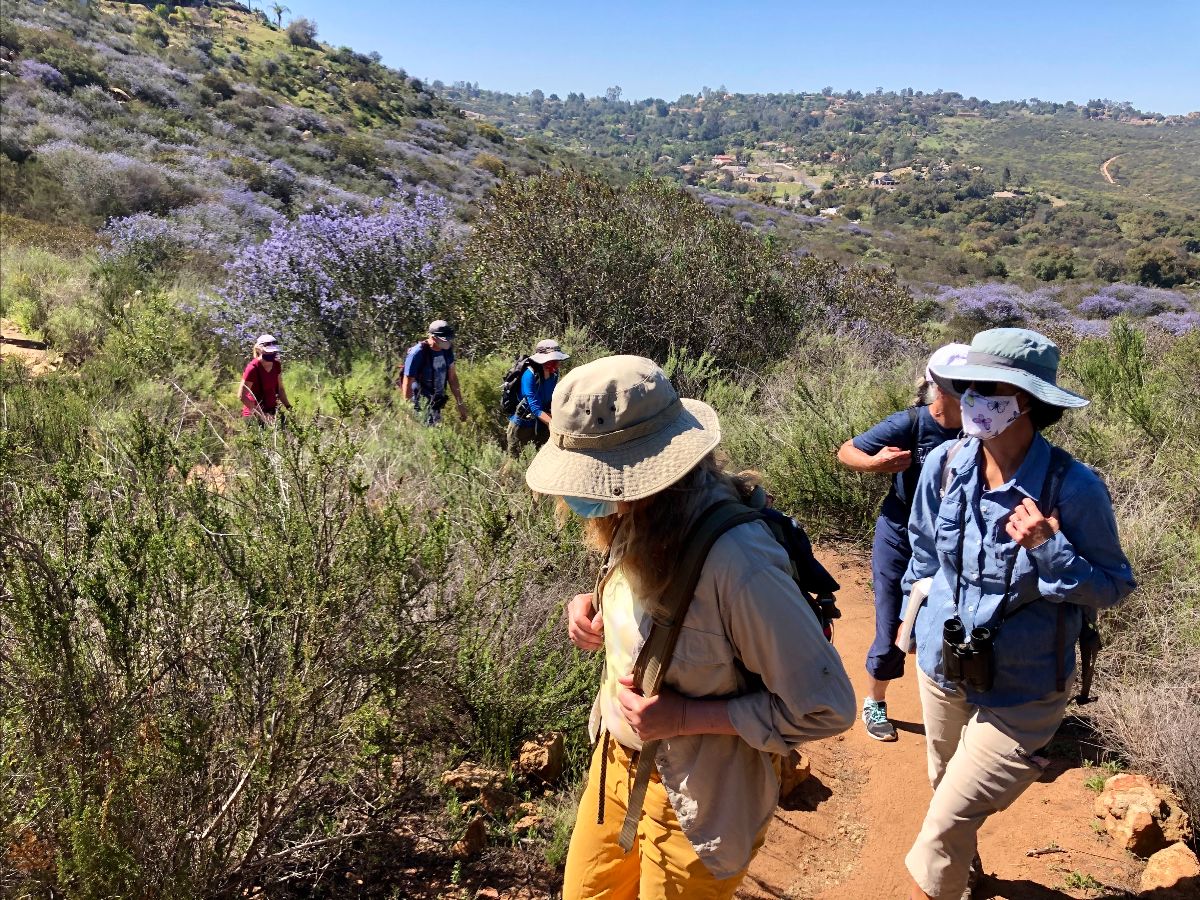
EDI members and staff taking in the Ramona lilac (Caenothus tomentosus) blooms at Crestridge Ecological Reserve.
Members-Only Guided Hikes
There's no better time of year to hike in San Diego's foothills than spring—the abundance of native wildflowers remind us of what makes the county an international biodiversity hotspot! So far, EDI members have accompanied staff biologists on guided hikes through Rancho Jamul Ecological Reserve, and Crestridge Ecological Reserve. We spotted nesting raptors, kingbirds, vireos, grosbeaks and swallows circling the sky, and found roadrunners and burrowing owls close to the ground. One particular highlight was the blooming Ramona lilac (Ceanothus tomentosus) at Crestridge.
If you would like to join us on our next hike, join our membership program! Support the Earth Discovery Institute and reap the rewards of small group hikes led by EDI staffers who will share intimate and working knowledge of the flora, fauna and cultural heritage of the area.
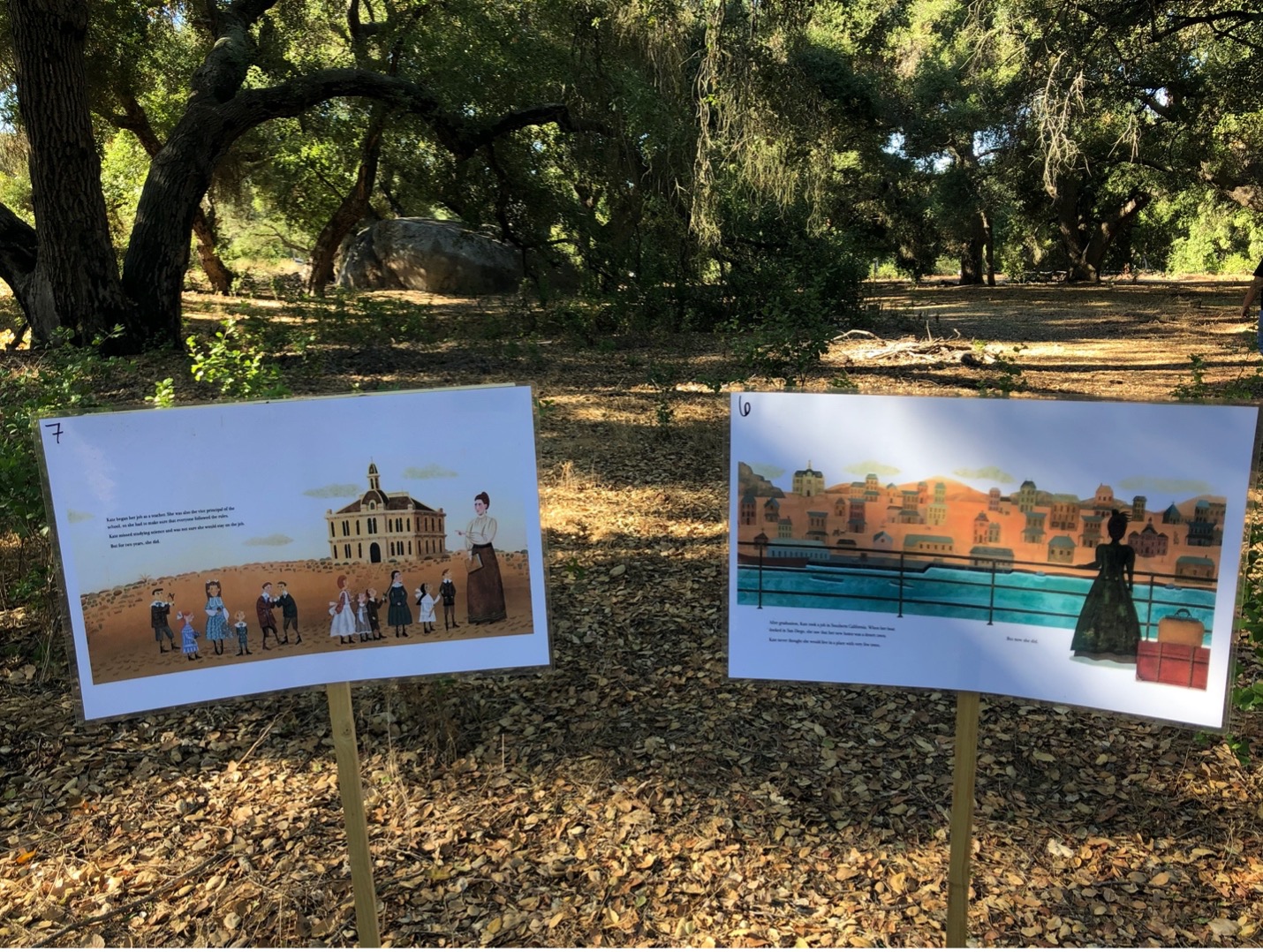
EDI's "Poetry Hike" currently installed at Crestridge Ecological Reserve.
Storybook Hike
Our Storybook Hike at Crestridge Ecological Reserve has been a hit! We have had over 300 visitors of all ages hike the trail to read our selected stories and enjoy the beautiful sounds and sights of the Reserve’s oak grove. We’ve recently taken down the storybook hike to give it some much needed TLC, but fear not! We have a shorter anthology along the trail that meanders through the native plant garden which is next to the little Hubbell House. Please take the time to enjoy the “Poetry Hike,” and learn a little about nature's creepier critters. To engage more of our extended community, our next selection has been translated into Spanish and Arabic, so please check back soon to enjoy the new story! Follow us on social media to get updates.
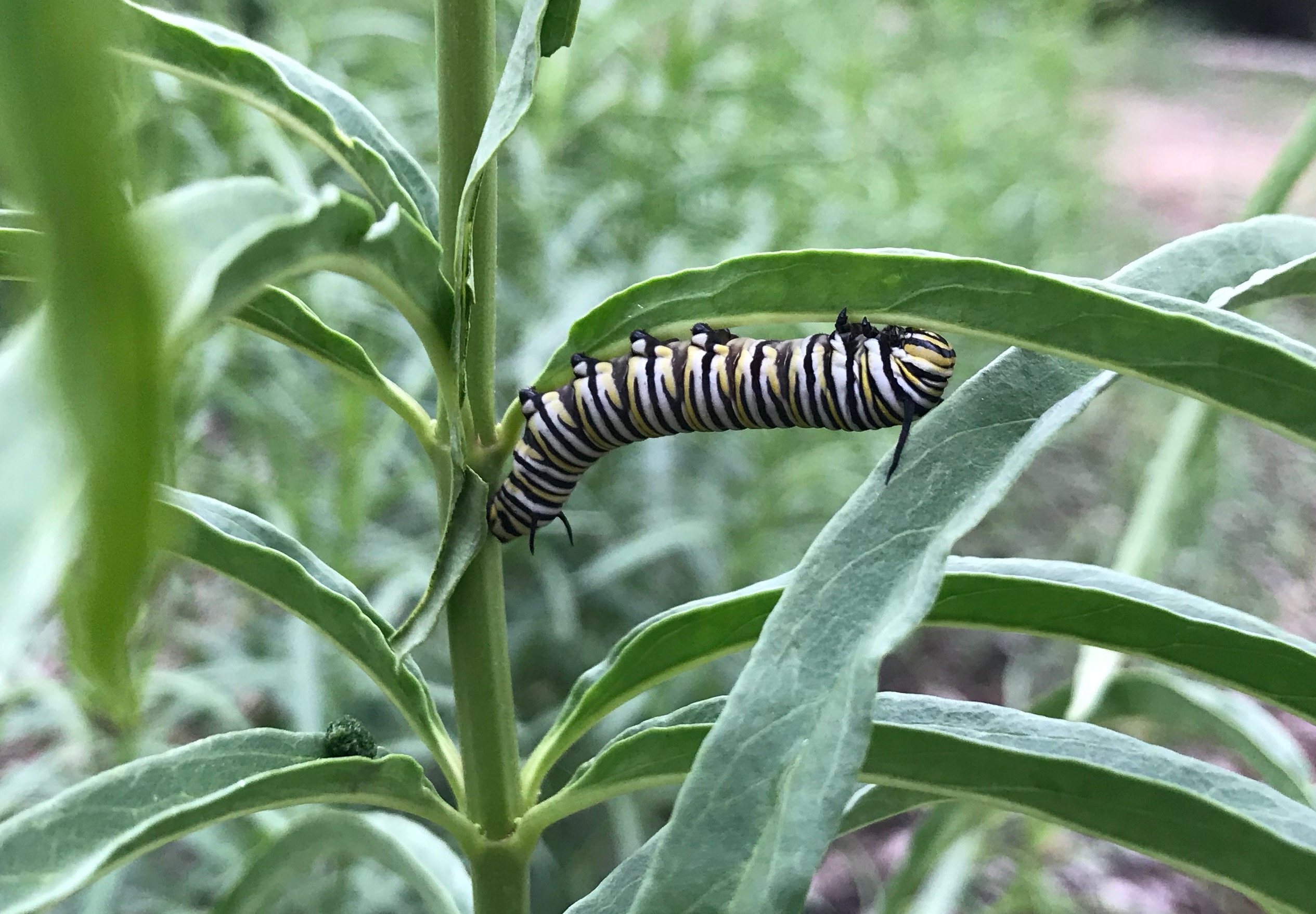
Western monarch butterfly caterpillar growing on native narrow-leaf milkweed (Asclepias fascicularis) at EDI's milkweed farm.
Farming Milkweed for Monarchs and You
Earth Discovery Institute's native milkweed farm is up and growing! Last year's narrow-leaf milkweed (Asclepias fascicularis) have come out of winter dormancy and are putting on leaves and height. These second-year plants are already beginning to flower and will produce our first crop of seed this year. EDI's trusty weekly volunteers expanded the irrigation and doubled the size of the beds. Along with a second-year planting of narrow-leaf milkweed, we added woolly-pod milkweed (Asclepias eriocarpa) to the farm this year. It is already up and will add new diversity to the native milkweeds available for restoration projects and home gardeners throughout the county. Other pollinator attracting plants are being added in and around the farm, including goldenrod and sages.
We have spotted several western monarch caterpillars on our milkweed this month and are eagerly anticipating the next stage of their spectacular life cycle! Visit our website to learn more about the plight of western monarch butterflies, and how you can help.


